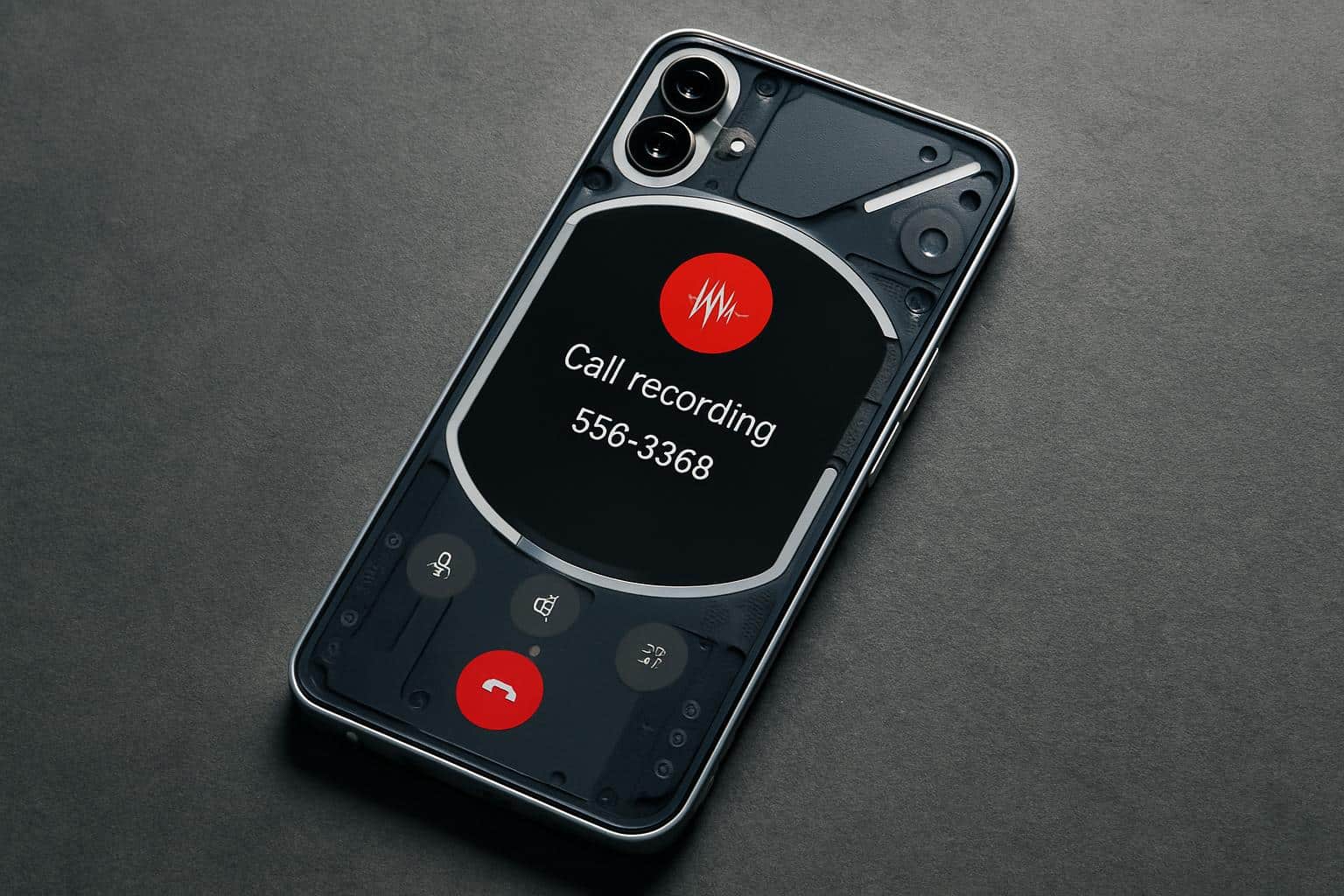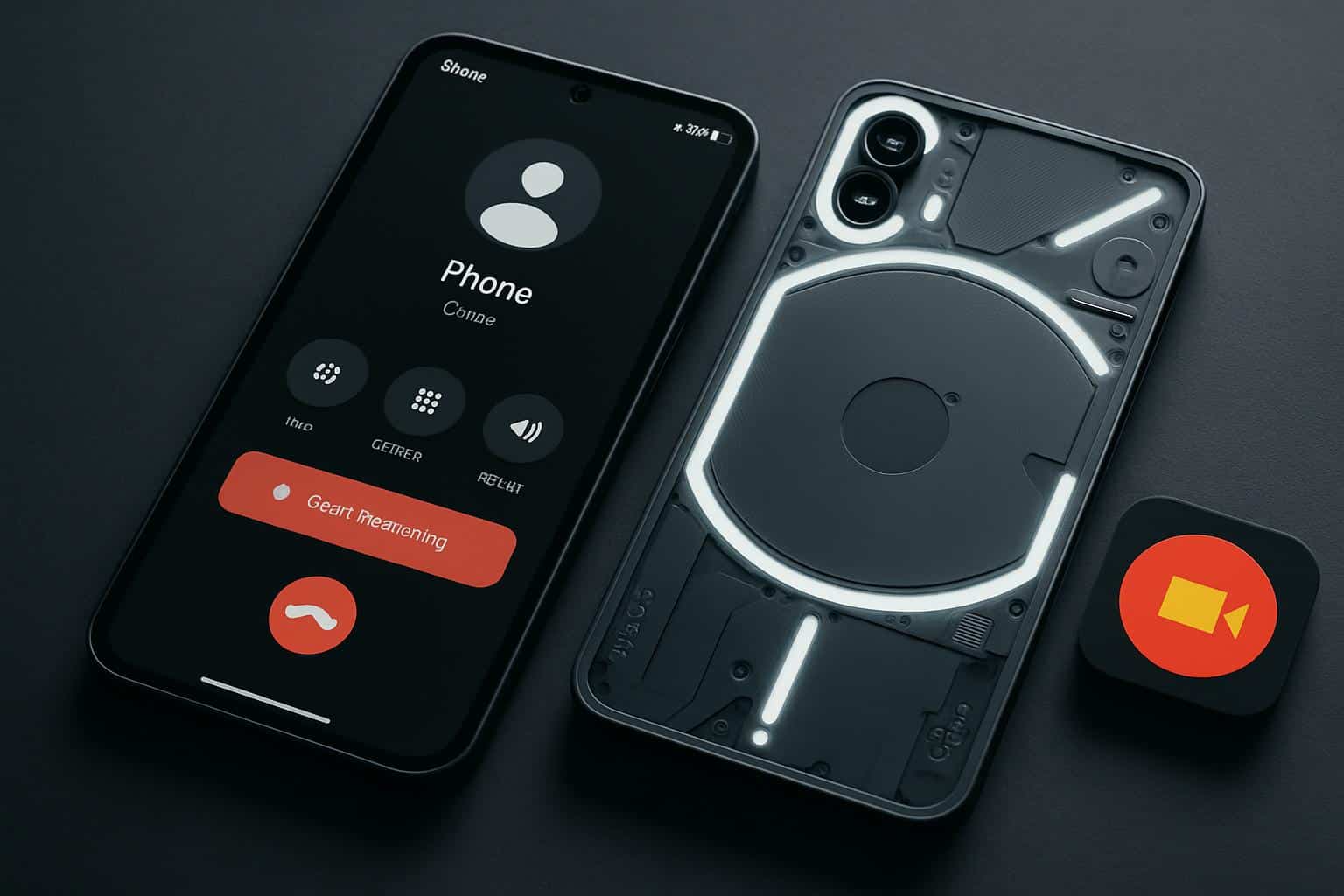Nothing isn’t turning on native call recording on its newest phones, but the release appears to be deliberately limited. The company said that call recording would be coming through the Essential Space app only for the Phone 3 series, but not all countries and regions support this feature at launch. The decision puts Nothing in line with its competitors that already include on-board recording, even as it navigates the tangled maze of regional privacy laws.
How Call Recording Works on Nothing Phone 3 Devices
The Call Recorder is a feature woven within Essential Space — the system-level space containing the essential tools of Nothing’s newer devices. Users can start recording in two ways: by long-pressing the Essential Key, located on the side of the phone, or by tapping a “Start recording” button that appears at the top of the screen during a call. As soon as you stop the capture, the audio is saved within Essential Space for instant playback.

There is nothing indicating that the feature will be turned on automatically, so it looks like a server-side update to the Essential Space app. That means no separate download or system update wait is required. The company didn’t get into what file formats are supported, or whether the recordings automatically sync to a cloud service; for now we’ll assume no and that all of it is stored locally in the Essential Space sandbox.
Models and markets included in the initial rollout
The rollout applies only to its most recent trio of phones: Phone 3, Phone 3a, and Phone 3a Pro. Previous models, such as Phone 2 and Phone 2a, remain unlisted. This comes as part of Nothing’s wider tactic to connect new software functionality with the hardware that features the Essential Key and updated system services — which is actually a great little power play.
For now, availability is limited to certain regions such as the United Kingdom, India, Japan, South Korea, the Philippines, Thailand, Malaysia, and Indonesia. Nothing does not mention specific targets for growth, but the timeline will be contingent on local certification and in-house testing. NB: The feature does not exist in countries with stronger consent laws or where platform policies make call recording difficult.
Why regional limits matter for Nothing’s call recorder
Call recording lives at the juncture of device capability, app policy, and privacy law. 2022 saw Google further crack down on third-party call recording through the Play Store, something that nixed plenty of apps that depended on accessibility APIs. There is nothing stopping OEM-built recorders from shipping where they are legal, though that’s the path Nothing is taking.
Consent rules differ widely. Personal call recording is typically legal in the UK if the recording is not shared, and businesses are subject to tighter obligations under the Information Commissioner’s Office (ICO) guidance. Sierra Leone allows recording, but requires consent, and recordings must follow telecom and data protection norms. Explicit consent is emphasized in Japan and South Korea under personal data laws. In the United States, where 12 states require all parties to consent while others have adopted a one-party consent rule, legal terrain is especially diverse — one of the reasons many manufacturers refrain from rolling out broadly there.

So to compensate for enforcement discrepancies, some brands add audible prompts or on-screen messages. Nothing has not clarified if its recorder makes announcements or plays tones to the other party. Here, we promote being law-abiding in the use of this feature.
What users can expect from call recording on Phone 3
For reporters, customer support reps, and anyone else who requires an accurate record of phone calls without the friction (and reliability issues) of third-party tools, the feature should help. The Essential Key shortcut is especially useful for recording interviews or troubleshooting calls on the go.
Battery impact should be minimal — recording audio is pretty light after all, especially compared to the power demands of GPS or a camera — but if you’re doing a lot of it, your storage will suffer. It’s a good idea to gauge available space in Essential Space, call for a few seconds to verify audio quality on each side, and label recordings instantly for quicker retrieval.
How it stacks up against rivals offering call recording
Samsung has support for native call recording in pretty much every region, with options to auto-record all calls, but as before, it’s only standard on one version of the software. Strong per-contact and auto-recording controls are also available from Xiaomi and plenty of other Chinese OEMs in territories that permit it. Google has been focusing its Pixel line on the Recorder app and Call Screen features, with only narrow direct call recording access because broader policy considerations around calls have limited the feature. Nothing’s action follows moves by these rivals in bringing its latest phones closer to those competitors, at least in markets where legal terms are relatively clear-cut.
The phased launch indicates Nothing is focusing on preserving standards while also testing the waters with demand. If adoption proves strong and regulatory avenues clear, expect a wider rollout and perhaps deeper controls — including per-call toggles, clearer prompts, and organizational features for power users.
For the time being, owners of the Phone 3, Phone 3a, and Phone 3a Pro in the list of supported countries can begin recording without needing to install anything extra. Everyone else will need to wait for Nothing’s next wave of market approvals — or resort to other recording workflows where allowed.

